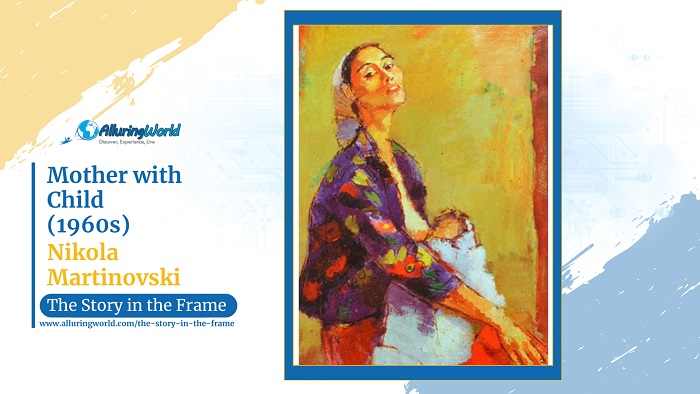Mother with Child, sometimes referred to as Nurse, is a deeply moving and emotional portrayal of the bond between a mother and her child which is a series of paintings that were painted by Nikola Martinovski in the mid-20th century, or more precisely between the 1930s and the 1960s. Being one of the most celebrated works by the Macedonian artist, this painting captures themes of warmth, protection, and maternal love through expressive forms and a uniquely modern yet deeply traditional aesthetic, and the artwork reflects Martinovski’s ability to merge folk influences with modern artistic movements, making it a standout piece in Balkan art history.
About the Painter:
Nikola Martinovski (1903–1973) is considered to be one of the pioneers of modern Macedonian painting. Born in Krushevo, Macedonia, he studied art in Belgrade and later in Paris, where he was exposed to European avant-garde movements, and his work is characterized by a fusion of expressionism, cubism, and folk motifs, often exploring themes of everyday life, tradition, and human emotion. Martinovski’s Mother with Child is one of his most recognized paintings which embodies his sensitivity to the human condition and his distinctive artistic style.
Inspiration and Reasons Behind the Painting:
Martinovski was deeply inspired by rural Macedonian life, and his works often depict peasant women, children, and the simplicity of domestic existence. Mother with Child is a reflection of the timeless connection between mother and child, a theme that resonates across cultures and eras, and through this painting, he sought to convey not only the physical closeness of a mother cradling her child but also the profound emotional and spiritual bond that defines motherhood. His use of simplified forms and expressive brushstrokes emphasizes the universal nature of this relationship, making the painting both deeply personal and widely relatable.
What is Depicted in the Painting:
The painting presents an intimate and tender moment between a mother and her child. The mother, dressed in somewhat traditional Macedonian clothing from the time when the painting was created, gently embraces her baby, whose small figure rests peacefully in her arms. Their faces, stylized yet deeply expressive, convey the deep love and serenity, but the closeness of their bodies creates a sense of unity, reinforcing the idea of protection and maternal care. The background is often abstract or minimalistic, allowing the viewer to focus on the emotional intensity of the central figures.
Colors and Techniques:
Martinovski’s use of color in this painting is warm and earthy, with dominant tones of ochre, brown, and muted red. These colors evoke the warmth of home and the connection to traditional Macedonian heritage, and his brushwork is expressive yet controlled, with soft contours that emphasize the tenderness of the scene. The faces and forms are simplified in a manner reminiscent of modernist movements like expressionism and post-impressionism, yet the emotional depth remains strong. The blending of folk elements with a contemporary artistic approach gives the painting a timeless quality.
Conclusion:
In conclusion, Mother with Child stands as one of Nikola Martinovski’s most cherished works which captures the essence of motherhood with simplicity and profound emotion. Its universal message of love, care, and the unbreakable bond between mother and child continues to resonate with audiences today, and this painting not only highlights Martinovski’s artistic genius but also serves as a testament to the enduring power of human connection in art.
Note: This painting is part of an oil painting art series by the Macedonian modern artist Nikola Martinoski who created them from the 1930s to the 1960s. The pictures commonly depict a Macedonian Romani woman who is breastfeeding a child, and as there is no clear indication of how many paintings there are, all paintings are considered of high value and from time to time they are the target of looting and smuggling.

